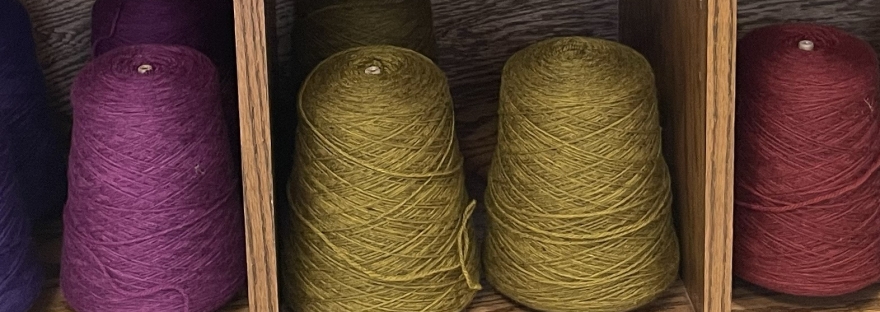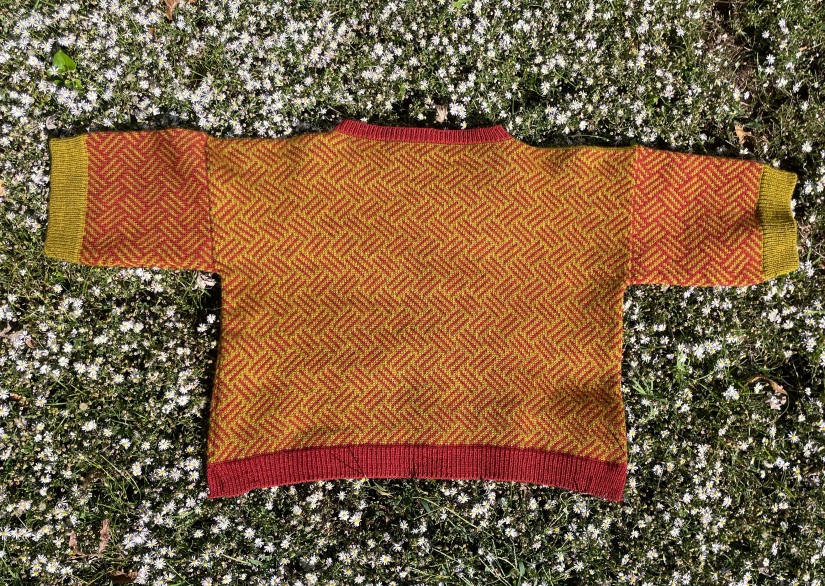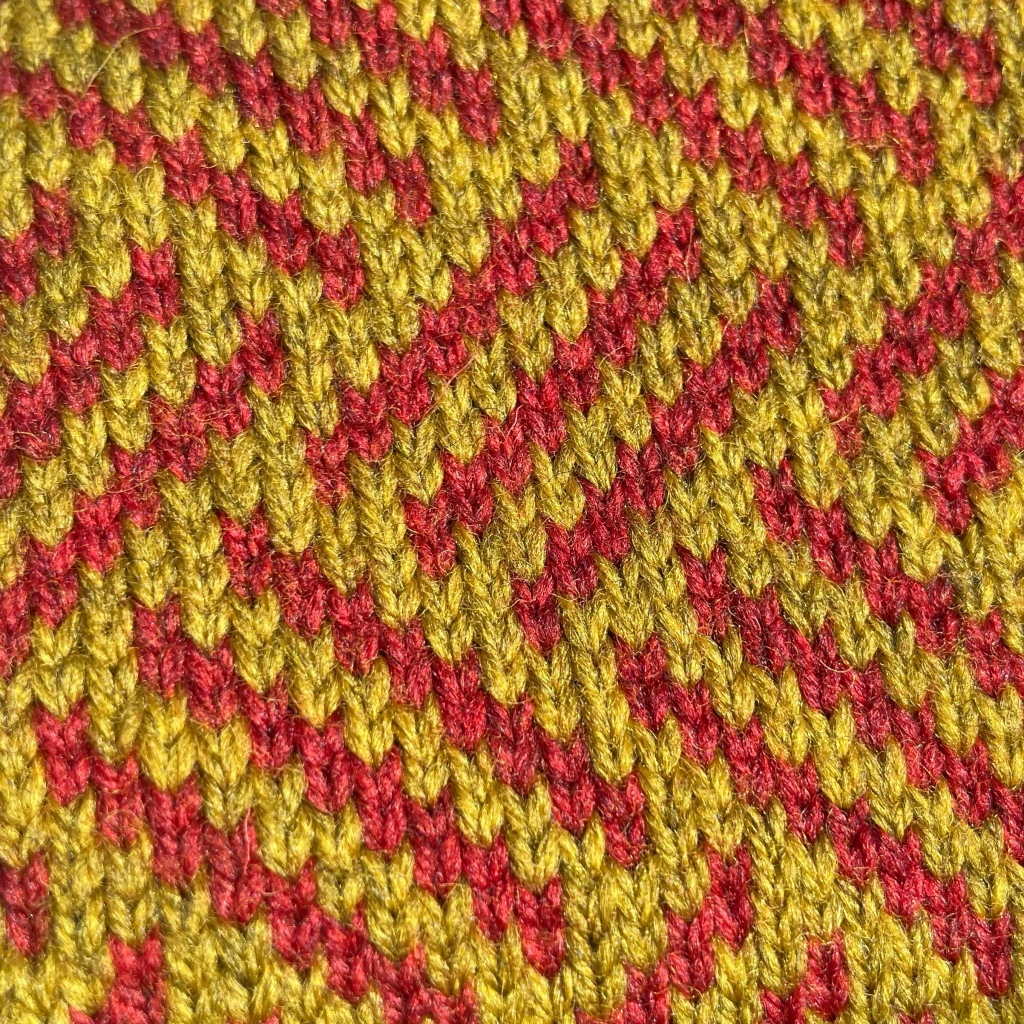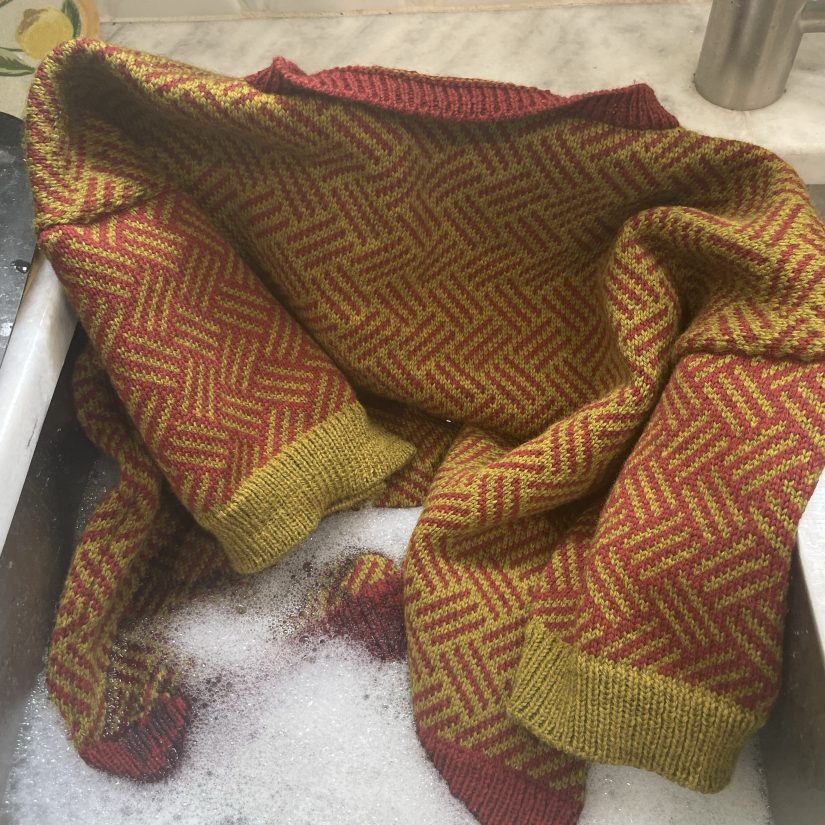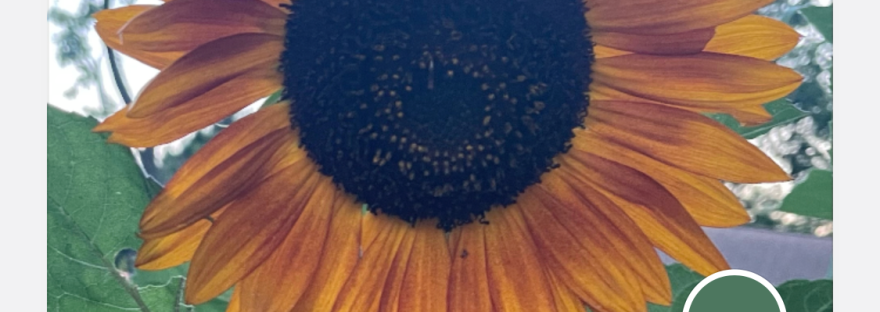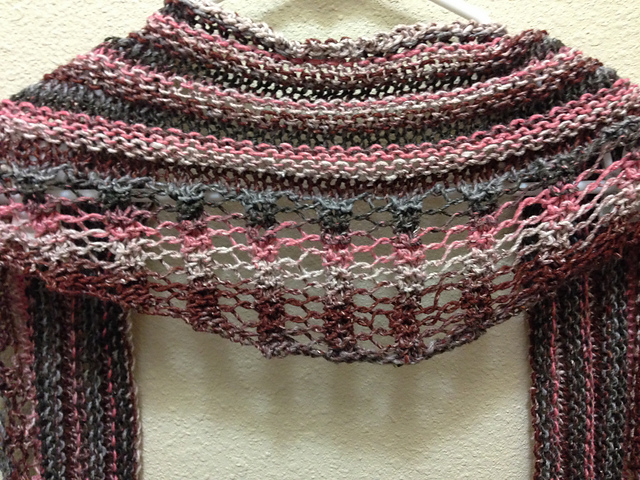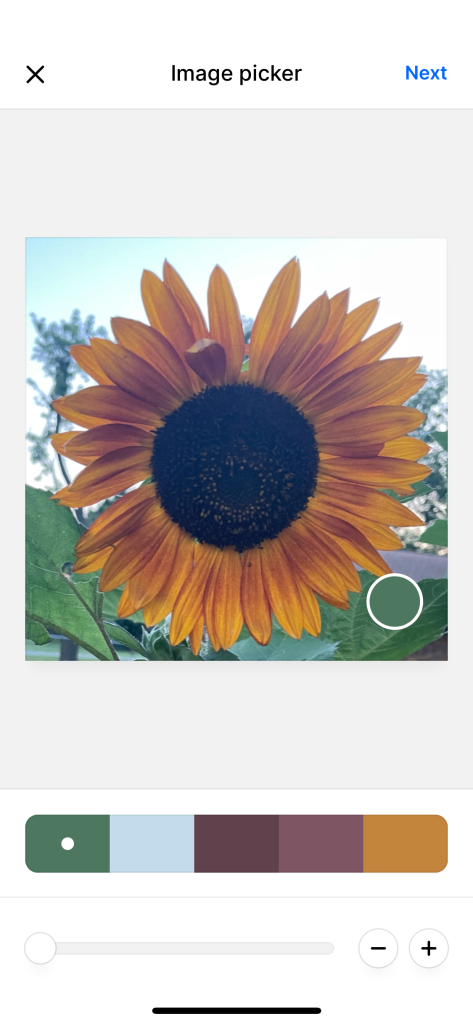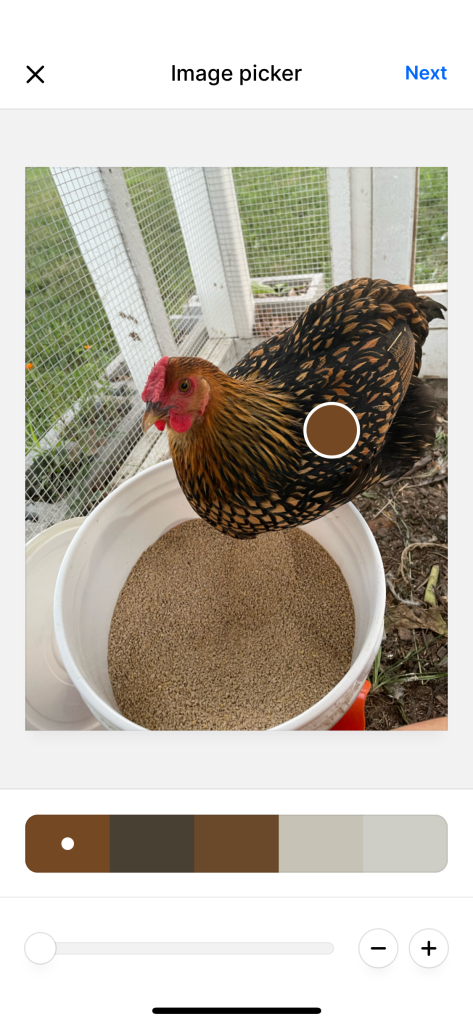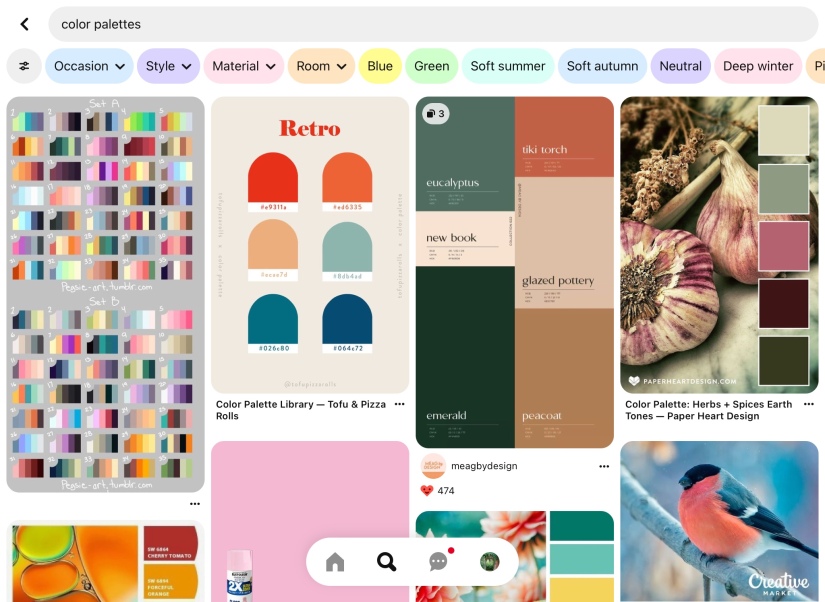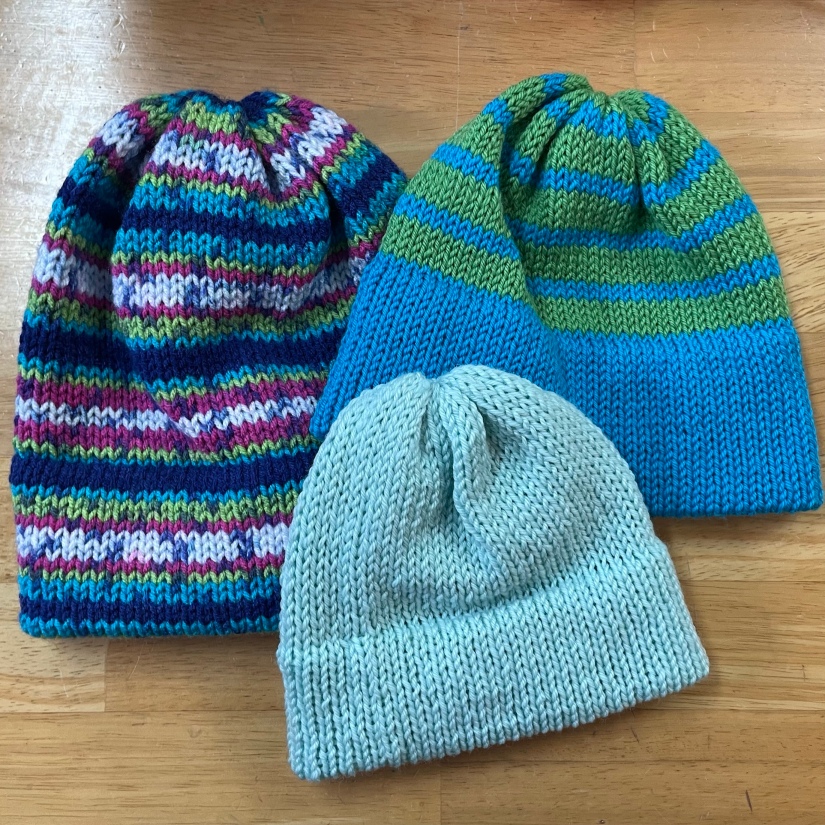If you have a little bit of Christmas Cash and you feel like investing in yourself for the New Year, pick up the newly-released Texture and 3D Effects Machine Knitting Techniques book. Amber Hards teaches texture and playfulness in her essential addition to the series.

“[Hards] encourages you to explore and experiment with confidence to produce exciting, tactile knitwear.”
publisher’s blurb
Find it here on Amazon.
The Details
| Published: January 1, 2024 (US/NA) | Publisher: The Crowood Press |
| Format: Paperback | Pages: 144 |
| MSRP: $24.99 | Canada: $32.99 |
Chapters
| Materials and Stripes | Manual Tucks |
| Punchcards | Weaving |
| I-cords, Strips of Knit, & 3D Embellishment | Partial Knit: Frills, Bobbles, Loops, 3D Scales |
| Lace Holes & Ladders | Pattern Collection |
Overview
Amber Hards is a UK-based knitwear designer and maker who has been teaching machine knitting since 2016. Her website showcases years of her work, and I encourage you to give it a look. I especially recommend viewing her “Loving Love” show. You can see why those behind the Machine Knitting Techniques series enlisted her aid with tactile knitting!
The Crowood Press set a high standard for photographic instruction with their Machine Knitting Techniques series, and Hards meets that here. Instructions are clear with illustrative photos. Hards uses color contrast strategically to illustrate steps and movement of textures, but the generally monochromatic palette helps you visualize the textures of the stitches.
The “Pattern Collection” at the end of the book is a bit underwhelming with only two patterns, but remember that this is a technique book. The focus is, as it should be, on technique instruction.
Practicality
“When I show students more textured skills, they often express feeling overwhelmed by the process. As different techniques are often presented as all-over swatches where the stitch or technique is packed together throughout the swatch, many of these textured effects often feel too “runway” or high fashion for a beginner or casual machine knitter. “Where on earth would you actually wear that?” is a common question.
You don’t have to use these techniques all over! A large shawl completely done in one technique can be stunning, but remember that small, pinpointed uses of these details can add to an otherwise simple garment.
This partial knitting shawl I made in 2019 looks like a myriad of connected i-cords or winding snakes of stockinette stitch. It was created by moving groups of needles in and out of work.


Designer Linda Jensen uses the same technique for the bodice of this Ripple Top. Confining it to one part of a garment doesn’t diminish the visual interest this stitch generates. It just refines it.
Pintucks in the shoulder area add interest to an otherwise simple October Cardigan by Jesie Ostermiller. Using them over an entire cardigan could be interesting, but confining the texture to one area created a way to draw the eye upwards.
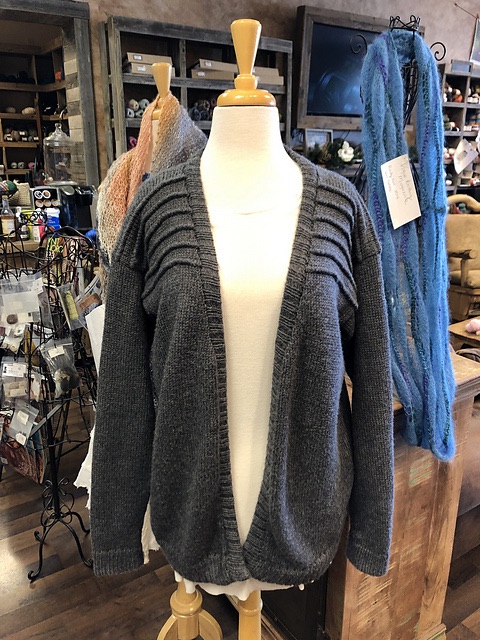
This October Cardigan was knitted on my Passap Bulky Eight and was one of the first machine knitted projects I created.
It’s not perfect, but I learned so much making it!
Why don’t you try choosing a technique from Texture and 3D Effects and place it in a similar location as the pintucks in this cardigan?
Buy or Bypass?
Of the Machine Knitting Technique books released so far, I suppose you could skip this one, but I think that would be a mistake. Developing skills like these can help you in your other works. Paying attention to how textured stitches are weighted while you knit them, for example, helps you become more aware of your work as it sits on the machine.
Texture and 3D Effects might feel like it is written more for the aspiring designer than your everyday machine knitter, but let’s face it- if you are a machine knitter, you need to learn to be comfortable being the designer yourself because of the lack of available patterns.
Hards encourages playfulness in machine knitting, and I applaud that.
I hope you’ll explore your creativity on the knitting machine even more this year and realize that you might just already be a designer.
Happy 2024!

Thank you for joining me on this machine knitting journey! What texture technique from the book will you try first? Let me know in the comments!
Disclaimer: Links on this site may be Amazon Affiliate links. If you choose to purchase an item using my affiliate link, I may receive a small commission at no cost to you.
If you don’t have a local shop to support, please consider using my link and supporting the site!
I purchased this book with my own money. All opinions are honest and my own.
If you would like to submit a book, yarn, accessory, or other idea for review, please contact me through my contact form.

Like what you see and want to support the site?
https://storage.ko-fi.com/cdn/widget/Widget_2.jskofiwidget2.init(‘Support Me on Ko-fi’, ‘#29abe0’, ‘J3J45DOLK’);kofiwidget2.draw();

